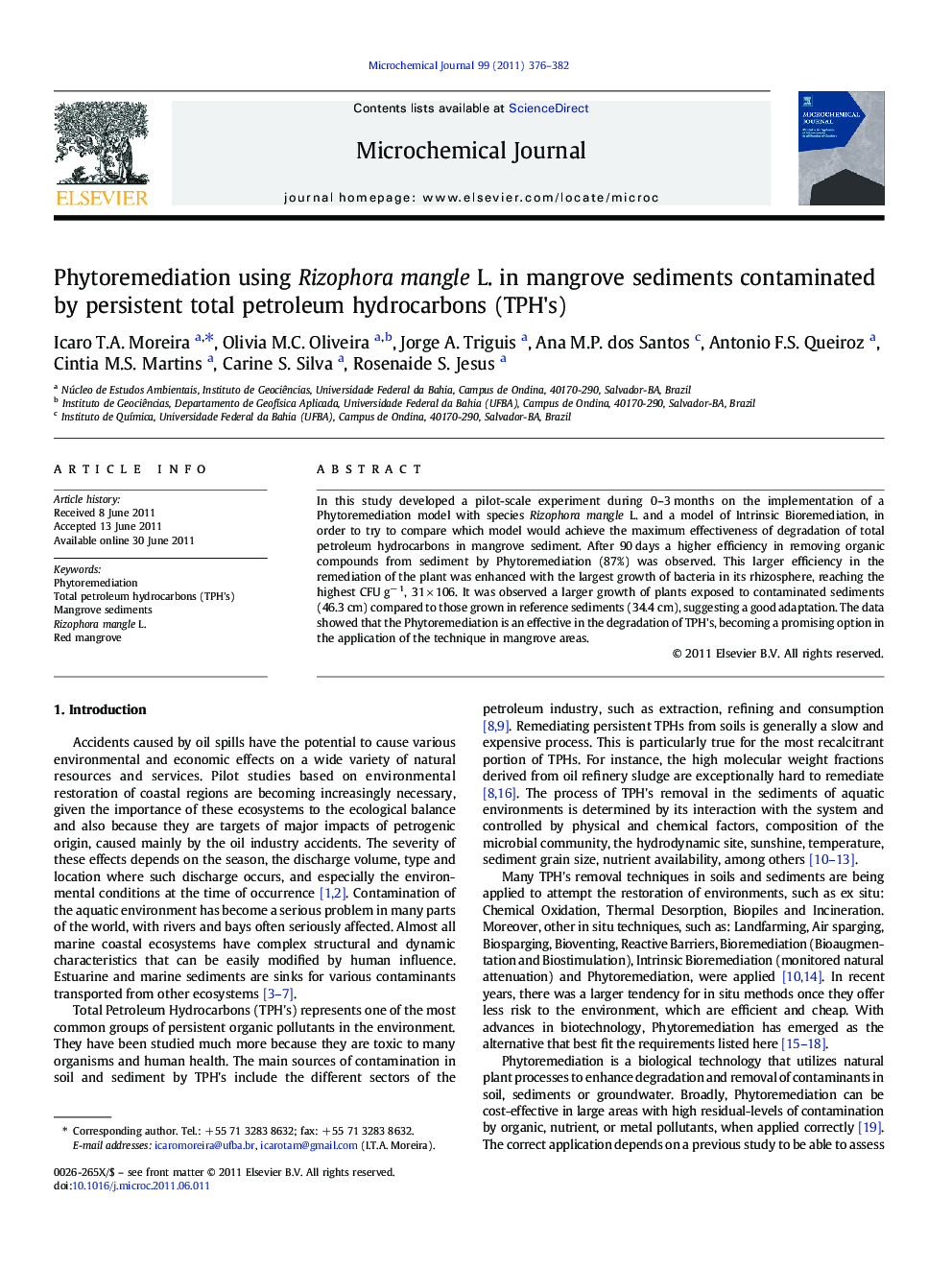| Article ID | Journal | Published Year | Pages | File Type |
|---|---|---|---|---|
| 10556859 | Microchemical Journal | 2011 | 7 Pages |
Abstract
In this study developed a pilot-scale experiment during 0-3 months on the implementation of a Phytoremediation model with species Rizophora mangle L. and a model of Intrinsic Bioremediation, in order to try to compare which model would achieve the maximum effectiveness of degradation of total petroleum hydrocarbons in mangrove sediment. After 90 days a higher efficiency in removing organic compounds from sediment by Phytoremediation (87%) was observed. This larger efficiency in the remediation of the plant was enhanced with the largest growth of bacteria in its rhizosphere, reaching the highest CFU gâ 1, 31 Ã 106. It was observed a larger growth of plants exposed to contaminated sediments (46.3 cm) compared to those grown in reference sediments (34.4 cm), suggesting a good adaptation. The data showed that the Phytoremediation is an effective in the degradation of TPH's, becoming a promising option in the application of the technique in mangrove areas.
Related Topics
Physical Sciences and Engineering
Chemistry
Analytical Chemistry
Authors
Icaro T.A. Moreira, Olivia M.C. Oliveira, Jorge A. Triguis, Ana M.P. dos Santos, Antonio F.S. Queiroz, Cintia M.S. Martins, Carine S. Silva, Rosenaide S. Jesus,
